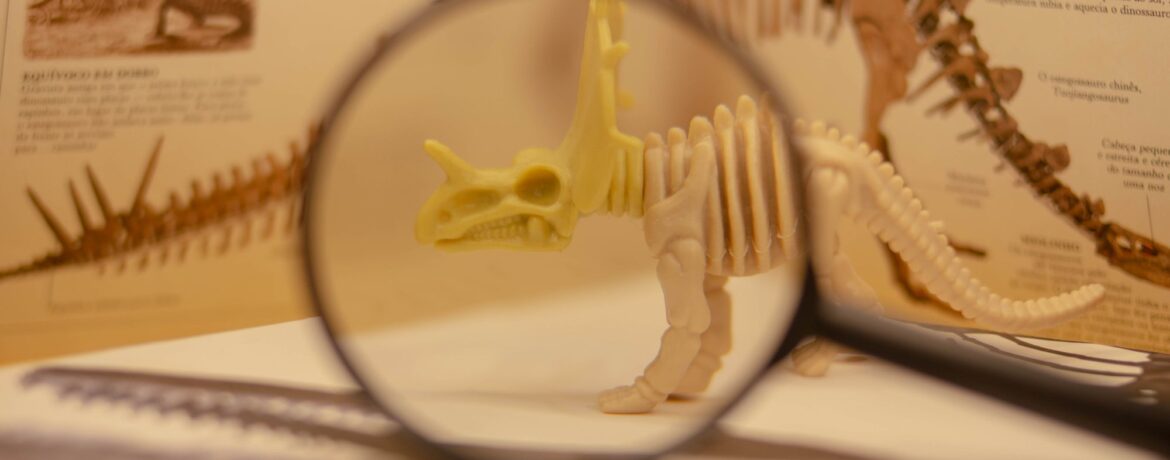Dinosaurs have captivated people’s imaginations worldwide for centuries. Shapes and sizes ranging from the long neck dinosaur to the dinosaurs with the hard head. These magnificent creatures once roamed the Earth, and though they are now extinct, they have left behind a rich fossil record that has given us a glimpse into their fascinating lives. In honor of these incredible animals, let’s look at these six scientists who made notable discoveries about dinosaurs.
1. Mary Anning (1799-1847)
Anning was an English fossil collector, dealer, and paleontologist who made significant contributions to the early study of dinosaurs. One of her most notable discoveries was the first nearly complete skeleton of an ichthyosaur, a type of marine reptile. She also discovered important fossils of stegosaurs and plesiosaurs. Though she did not receive much recognition during her lifetime, her work laid the foundation for future dinosaur research.
Mary Anning was one of her era’s most important fossil hunters and was curious and resourceful. Born in 1799 in the coastal town of Lyme Regis, England, Anning began collecting fossils when she was just a child. She soon developed a keen eye for finding fossils, and her discoveries attracted the attention of both scientists and amateurs. Throughout her long career, Anning made several groundbreaking discoveries, including the first nearly-complete ichthyosaur skeleton and the first complete plesiosaur skeleton. Her work helped to transform our understanding of prehistoric life, and she is now recognized as one of the most influential fossil hunters in history. Despite her great accomplishments, Anning’s contributions to science were generally disregarded throughout her lifetime. Only after her death did she begin to receive the recognition she deserved. Today, Mary Anning is hailed as one of history’s best fossil hunters of all time.
2. Gideon Mantell (1790-1852)
Mantell, a British physician and amateur paleontologist, is best known for discovering the Iguanodon dinosaur. He discovered the first iguanodon teeth in 1820 and found several more fossils of this species, including bones and partial skeletons. His work helped establish dinosaurs as a distinct group of reptiles from lizards and crocodiles.
Gideon Mantell was born in 1790 to a poor family in Lewes, England. He initially worked as a watchmaker before studying medicine. In 1822, he discovered the first fossilized remains of an extinct creature that would come to be known as an iguanodon. This finding led to his lifelong passion for paleontology. Mantell discovered several other important fossils throughout his career, including those of a pterodactyl and a Mosasaur. He also wrote several geology and paleontology books, which helped raise public awareness of these fields. Gideon Mantell died in 1852, but his legacy continues to live through his many discoveries.
3. Richard Owen (1804-1892)
Owen was a British comparative anatomist considered to be the father of modern paleontology. He coined the term “dinosaur” in 1842 and played a pivotal role in classifying these animals into distinct groups based on their anatomy. He also described several new species of dinosaurs, including megalosaurus and hylaeosaurus. His work helped to bring dinosaurs into the mainstream scientific community.
Richard Owen was a British paleontologist and naturalist who made significant discoveries to biology. He is best known for his work on dinosaurs, including discovering the first dinosaur fossil in England. Owen was born in 1804 in Lancashire, England. He became interested in anatomy and physiology while studying medicine at the University of Edinburgh. After graduation, he took a position as an anatomy professor at the Royal Veterinary College in London. In 1841, he was appointed as superintendent of the Natural History Department at the British Museum. He held this position for more than 20 years, during which time he made many important discoveries. Owen died in 1892 at the age of 88.
4. Othniel Charles Marsh (1831-1899)
Marsh was an American paleontologist who made many important discoveries about dinosaurs during his career. He was the first to discover several new dinosaur species, including triceratops, brachiosaurus, apatosaurus, and tyrannosaurus rex. He also helped to establish the Field Museum of Natural History in Chicago as one of the premier institutions for dinosaur research.
Othniel Charles Marsh is best known for his work as a paleontologist, but his life was full of adventure and discovery. Born into a wealthy family in 1831, Marsh was able to pursue his interests in natural history from a young age. He attended Yale University, where he studied under renowned zoologist Benjamin Silliman. During this time, Marsh became interested in the fossilized remains of extinct animals. After receiving his degree, he went to Europe to study with some of the leading scientists of the time. He soon returned to the United States, where he began teaching at Yale and conducting fieldwork in the American West. In 1864, he made one of his most important discoveries: the first complete skeleton of the Stegosaurus. This finding helped to revolutionize our understanding of dinosaurs and their evolution. Marsh made many other significant discoveries throughout his career, including the first evidence of mammalian evolution. He continued work until his death in 1899, leaving behind a lasting legacy as one of the greatest paleontologists of all time.
5. Edward Cope (1840- 1897)
Cope was an American paleontologist who made numerous important discoveries during his career. He described over 60 new species of fossil vertebrates, including many dinosaurs such as comancherodon and elasmosaurus. He also discovered the first remains of two iconic Jurassic dinosaurs: brachiosaurus and apatosaurus. However, he is perhaps best known for his bitter rivalry with Othniel Charles Marsh, which came to be known as the “Bone Wars.”
As a paleontologist, Edward Cope played a significant role in the late 19th-century Bone Wars. Although he is sometimes overshadowed by his rival, Othniel Marsh, Cope is a highly accomplished scientist in his own right. Born in Philadelphia in 1840, Cope came from a wealthy family and was able to attend private schools as a child. However, he was largely self-educated when it came to natural sciences. In 1864, he published his first scientific paper and soon began to gain recognition for his work in paleontology. Cope became an expert in identifying and classifying fossilized remains and made several important discoveries during his career. He also engaged in a fierce rivalry with Marsh, culminating in the famous Bone Wars. Despite their disagreements, both Cope and Marsh made important contributions to the study of paleontology. Thanks to their work, we now have a much better understanding of the history of life on Earth.
6. Barnum Brown (1873-1963)
A paleontologist from the United States named Brown worked at the American Museum of Natural History in New York City. During his career, he discovered and described many new species of dinosaurs, including Tyrannosaurus rex and Triceratops horridus. He also helped assemble some of the most impressive dinosaur displays at the American Museum of Natural History, which remain popular attractions today. The museum boasts one of the largest dinosaur specimen collections in the world as a result of Brown’s diligent work in fossil collection.
These six scientists have significantly contributed to our understanding of dinosaurs through their groundbreaking discoveries. Their work has helped shape our perception of these animals and has given us a glimpse of their fascinating lives. The next time you visit your local natural history museum or see a documentary about dinosaurs on television, remember these scientists and their significant contributions to our understanding of these incredible creatures!

